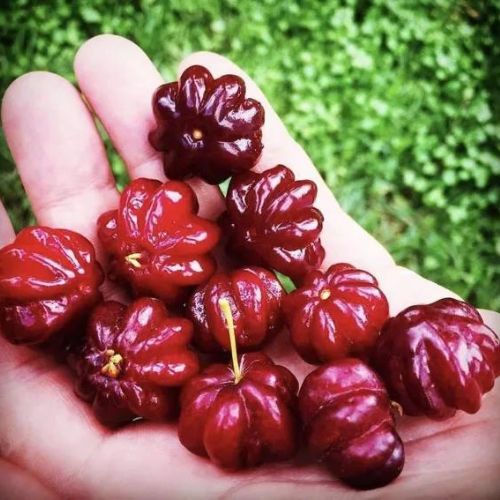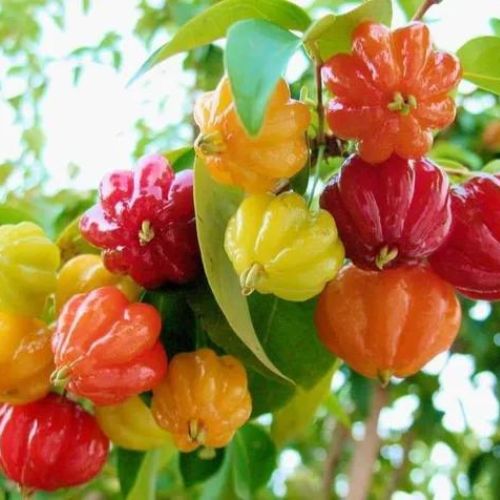

Live Plant
5 % Off on pre-paid purchase above 999/- COUPON:Newness- 5
10 % Off on pre-paid purchase above 1999/- COUPON :WELCOME-10
15 % Off on pre-paid purchase above 9999/- COUPON :SAVE-15
Creating a hybrid fruit plant that combines traits from Australian, Surinamese, and cherry varieties sounds like a fascinating project! Each of these regions likely contributes unique flavors, growing conditions, and characteristics to the mix. Here's a general outline of how you might approach such a project:
1. **Research the Parent Plants**: Understand the characteristics of each parent plant. What are the key traits you want to incorporate from each? For example, Australian fruits might bring drought tolerance or unique flavors, Surinamese varieties might offer tropical adaptations or disease resistance, and cherries might contribute sweetness and texture.
2. **Select Parent Plants**: Choose specific cultivars or varieties of each plant species that have the desired traits. You'll need to consider compatibility for crossbreeding and ensure they flower and fruit around the same time for successful pollination.
3. **Cross-Pollination**: Employ controlled cross-pollination techniques to breed the desired traits into the new hybrid. This might involve hand-pollination to ensure specific parentage.
4. **Growing Conditions**: Determine the optimal growing conditions for your hybrid plant, considering the requirements of its parent species. This includes soil type, sunlight, water needs, and climate considerations.
5. **Trial and Error**: Expect a lot of trial and error in the breeding process. Not every cross will be successful, and it may take several generations to achieve the desired characteristics.
6. **Evaluation**: Continuously evaluate the offspring for desired traits. This might include flavor, fruit size, disease resistance, yield, and adaptability to different climates.
7. **Propagation**: Once you have a successful hybrid, propagate it through grafting, cuttings, or other means to produce more plants.
8. **Testing and Commercialization**: Test the hybrid in different environments and climates to ensure its adaptability and consistency. If successful, consider commercializing the new hybrid by patenting it or partnering with nurseries for mass production.
Keep in mind that creating a new hybrid fruit plant can take years of dedicated effort and experimentation, but the results can be incredibly rewarding. Additionally, be sure to familiarize yourself with any regulations or restrictions regarding the breeding and distribution of new plant varieties in your region.
NewnessPlant partnered with so many nursery and have few own nursery to fulfill all your needs and available any kind of plants and seeds.